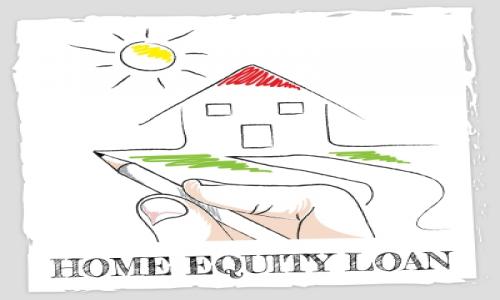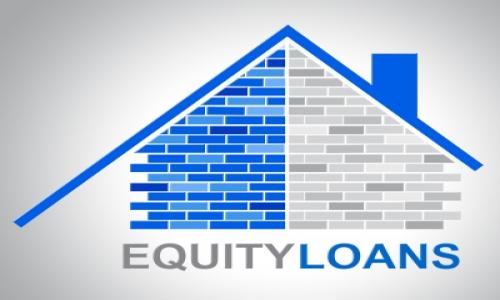
Third Federal Savings and Loan |
Intro APR
6.990 %
After Intro: 6.990 %
|
$0 |
Learn More
More Info
|
Conditions… Variable APR of Prime minus 1.01% in all states. Min loan amount $10,000. Max loan amount $200,000. 30-year term. Annual fee waived for the first year. See conditions for guarantee at thirdfederal.com.
- Third Federal rate are typically 20% lower than other leaders
- Guaranteed Lowest Rate
- No closing costs, prepayment penalties, or minimum draw requirements
- 10 year draw period
|

Figure Home Equity |
Intro APR
7.300 %
After Intro: 7.300 %
|
$15,000 |
Learn More
More Info
|
Available APRs range from 6.65% - 15.40*, which includes the payment of a higher origination fee in exchange for a reduced interest rate, which is not available to all applicants or in all states.(the advertised APR includes a combined 0.25% discount for opting into a credit union membership (0%) and enrolling in autopay (0.25%) as well as payment of higher origination fee in exchange for a reduced rate, which is not available to all applicants or in all states). The lowest APRs are only available to the most qualified applicants, depending on credit profile and the state where the property is located, and those who also select five year loan terms; APRs will be higher for other applicants and those who select longer loan terms. Rates change frequently so your exact APR will depend on the date you apply. APRs for home equity lines of credit do not include costs other than interest. You will be responsible for an origination fee of up to 4.99% of your initial draw, depending on the state in which your property is located and your credit profile. You may also be responsible for paying the costs of valuation if an AVM is not available for your property ($180), manual notarization if your county doesn’t permit eNotary ($380), and recording fees ($0 - $315) and recording taxes, which vary by state and county ($0-$1,400 per one hundred thousand dollars borrowed). Property insurance is required as a condition of the loan and flood insurance may be required if your property is located in a flood zone.
- Flexible terms, borrow $15K-$400K, redraw up to 100%
- Use to consolidate debt or finance your next home project
- 100% digital app & automated valuation
- Largest non-bank HELOC lender in the US
|

AmeriSave Mortgage Corporation |
0.000 %
|
$0 |
Learn More
More Info
|
• Home Equity Loans & Refinance – Cash out
• Customized rate quote with no impact to credit
• Low Rates, Quick Approvals, Wide Range of Products
• Over 100 Billion Funded. 22 Years in Business
- Home Equity Loans & Refinance – Cash out
- Customized rate quote with no impact to credit
- Low Rates, Quick Approvals, Wide Range of Products
- Over 100 Billion Funded. 22 Years in Business
|

Reliant Home Funding, Inc |
Intro APR
7.300 %
After Intro: 7.300 %
|
$15,000 |
Learn More
More Info
|
Available APRs range from 6.60% - 14.15*, which includes the payment of a higher origination fee in exchange for a reduced interest rate, which is not available to all applicants or in all states.(The advertised APR includes enrolling in autopay (0.25%) as well as payment of higher origination fee in exchange for a reduced rate, which is not available to all applicants or in all states). The lowest APRs are only available to the most qualified applicants, depending on credit profile and the state where the property is located, and those who also select five year loan terms; APRs will be higher for other applicants and those who select longer loan terms. Rates change frequently so your exact APR will depend on the date you apply. APRs for home equity lines of credit do not include costs other than interest. You will be responsible for an origination fee of up to 4.99% of your initial draw, depending on the state in which your property is located and your credit profile. You may also be responsible for paying the costs of valuation if an AVM is not available for your property ($180), manual notarization if your county doesn’t permit eNotary ($380), and recording fees ($0 - $315) and recording taxes, which vary by state and county ($0-$1,400 per one hundred thousand dollars borrowed). Property insurance is required as a condition of the loan and flood insurance may be required if your property is located in a flood zone. Consumers wishing to file a complaint against a mortgage company or a licensed residential mortgage loan originator should complete and send a complaint form to the Texas department of savings and mortgage lending, 2601 North Lamar, Suite 201, Austin, Texas 78705. Complaint forms and instructions may be obtained from the department’s website at www.sml.texas.gov. The department maintains a recovery fund to make payments of certain actual out of pocket damages sustained by borrowers caused by acts of licensed mortgage company.
- Relationships Rule: Transactions end, Relationships remain
- Accountability is Personal: Reflection before Projection
- Service through Knowledge: Great service means great understanding
- Evolve to Excel: We need to adapt and improve to succeed
|

Achieve Loans |
Intro APR
8.750 %
After Intro: 8.750 %
|
$0 |
Learn More
More Info
|
Home Equity loans are available through our affiliate Achieve Loans (NMLS ID #1810501). Equal Housing Opportunity. Offers may vary and all loan requests are subject to eligibility requirements, application review, loan amount, loan term, income verification, and lender approval. Product terms are subject to change at any time. Offers are a line of credit. Loans are not available to residents of all states and available loan terms/fees may vary by state where offered. Line amounts are between $15,000 and $300,000 and are assigned based on product type, debt-to-income ratio and combined loan-to-value ratio. Minimum 600 credit score applies for debt consolidation requests, minimum 700 applies for cash out requests. Other terms, conditions and restrictions apply. Fixed rate APRs range from 6.74% - 14.75% and are assigned based on underwriting requirements and offer APRs assume automatic payment enrollment which may provide a discount (autopay enrollment is not a condition of loan approval). Example: average HELOC is $57,150 with an APR of 12.75% and estimated monthly payment of $852 for a 10-year loan. 10,15, 20 and 30-year terms available (20 and 30 year terms only available for cash out requests). All terms have a 5-year draw period with the remaining term being a no draw period. Payments are fully amortized during each period and determined on the outstanding principal balance each month. Closing fees range from $750 to $6,685, depending on line amount and state law requirements and typically include origination (3.5% of line amount) and underwriting ($725) fees if allowed by law. Property must be owner-occupied and combined loan-to-value ratio may not exceed 80% for debt consolidation and 85% for cash out requests, including the new loan request. Property insurance is required and flood insurance may be required if the subject property is located in a flood zone. You must pledge your home as collateral. Contact Achieve Loans for further details.
- Competitive rates, Pre-qualify in minutes
- Mortgage Advisors standing by to help find the best solution
- Flexible terms with fast funding
- Minimum credit score: 640
|

Point Digital Finance |
0.000 %
|
$0 |
Learn More
More Info
|
Pointʼs Home Equity Investment (HEI) is an entirely new way to unlock your homeʼs wealth. Point partners with and invests alongside the homeowner in the property. Subject to underwriting approval, Point will pay you an upfront, lump sum amount in exchange for a portion of your home’s future appreciation. Future appreciation is based on using the risk adjusted Appreciation Starting Value and calculating any gain or loss based on the final appraised value of your home at the time of exit. Point charges up to a 3.9% processing fee (subject to a $2,000 minimum) and other third party paid closing costs such as appraisal, escrow, and government fees. The term is 30 years. Point will place a lien on your home to secure performance of the underlying agreement. There are no monthly payments or interest accrual. Homeowner’s repayment amount is based on the future value of the subject property at the time of exit, as outlined in the underlying agreement.
- No income requirements or need for perfect credit
- Your home wealth, to use your way
- Find out if you qualify in as little as 60 seconds
- Home Equity Investments are not considered a loan in all states
|

New American Funding, LLC |
0.000 %
|
$0 |
Learn More
More Info
|
Cash-Out and Home Equity Options Available.
- Competitive Rates for FICO Scores 580-679
- 366k+ positive reviews, A rating from the BBB
- Pay off higher interest rate credit cards, Pay college tuition
- 100% online mortgage application available
|

Figure Home Equity Line |
0.000 %
|
$0 |
Learn More
More Info
|
The Figure Home Equity Line is an open-end product where the full loan amount (minus the origination fee) will be 100% drawn at the time of origination. The initial amount funded at origination will be based on a fixed rate; however, this product contains an additional draw feature. As the borrower repays the balance on the line, the borrower may make additional draws during the draw period. If the borrower elects to make an additional draw, the interest rate for that draw will be set as of the date of the draw and will be based on an Index, which is the Prime Rate published in the Wall Street Journal for the calendar month preceding the date of the additional draw, plus a fixed margin. Accordingly, the fixed rate for any additional draw may be higher than the fixed rate for the initial draw.
- Fastest way to turn home equity into cash
- Flexible terms, redraw up to 100%, borrow $15k-$400k
- Approval in as little as 5 minutes. Funding in as few as 5 days.
- Use to consolidate debt or finance your next home project
|

CrossCountry Mortgage, LLC |
0.000 %
|
$0 |
Learn More
More Info
|
Please note that the interest rates offered are subject to change based on market conditions and borrower eligibility. The pricing and rate provided are accurate as of the specified date. It is important to be aware that the minimum loan amount for any loan program is $50,000. The specific amount and terms of the credit offer will be determined based on underwriting approval and guidelines, which include factors such as your credit history, your ability to make payments, and the available equity in your home.
To qualify for this offer, you must meet the required criteria and demonstrate creditworthiness. Additionally, providing up to two years of income verification may be necessary. The severity of your credit may also impact the required down payment. It is crucial to understand that the lender reserves the right to cancel this offer if the provided information cannot be verified.
Please note that all bankruptcies must be discharged in order to be eligible. This offer is nontransferable and is specifically available for single-family residences or owner-occupied condominiums. Please be aware that mobile homes and cooperatives are not included in this offer. It is important to note that the lender must hold a valid first lien position, and property hazard insurance is a requirement.
These are some key details to consider when evaluating this offer. It is essential to thoroughly review the terms and conditions and seek clarification from the lender regarding any specific questions or concerns you may have before proceeding with the application process.
- Transform Your Home Equity Into Cash: Explore our Tech-Powered Solutions!
- Unlock Your Home's Value: Discover the Power of our Online HELOC!
- Maximize Your Equity: Get Cash-Out Using Our HELOC for Your Next Big Step
- Secure Your Future: Experience the Ease of our Fixed Home Equity Loans
|

District Lending |
0.000 %
|
$0 |
Learn More
More Info
|
HELOC, HELOAN or CASHOUT REFI all available.
- No Lender Fees
- Fast
- Easy
- Over 20 Years Experience
|

Unlock Technologies, Inc. |
0.000 %
|
$0 |
Learn More
More Info
|
Unlock isn't a lender & doesn't offer loans, so you don't need perfect credit to apply!
No Additional Debt!
- No monthly payments or interest charges
- Minimum Credit score: 500
- Access up to $500k
- No need to refinance
|

Upstart |
0.000 %
|
$0 |
Learn More
More Info
|
1. APRs for initial advances range from 6.3% to 18.00% based on funded HELOCs as of September 2024. Your actual rate will depend on many factors such as your credit history, loan-to-value ratio, line amount, loan term, lien position, and property state. The lowest rates are only available to the most qualified applicants. The APR is variable, but the APR that will apply to each draw will be fixed on the date the draw is made.
2. As of October 2024, 10% of funded HELOCs achieved a closing timeline of 6 days or less and a funding timeline of 10 days or less. This timeline assumes consumers close with our remote online notary, provide supporting documentation promptly, and ensure the information provided is accurate and consistent with our verification process. Delays, discrepancies, and other unforeseen factors may impact the closing timeline. MBA’s 2024 Home Lending Study reports an average industry closing time of 31 days.
3. A Home Equity Line of Credit has a variable rate. The APR may change, but the APR that will apply to each draw will be fixed on the date the draw is made. Your APR will be the Prime Rate at the time of draw plus a margin fixed for the life of the HELOC.
- As low as 6.3% APR on your initial draw*
- Get your money up to 6x faster than the industry standard*
- Fixed rate on each draw*
- No paperwork needed to apply
|



















Add your Comment
or use your BestCashCow account